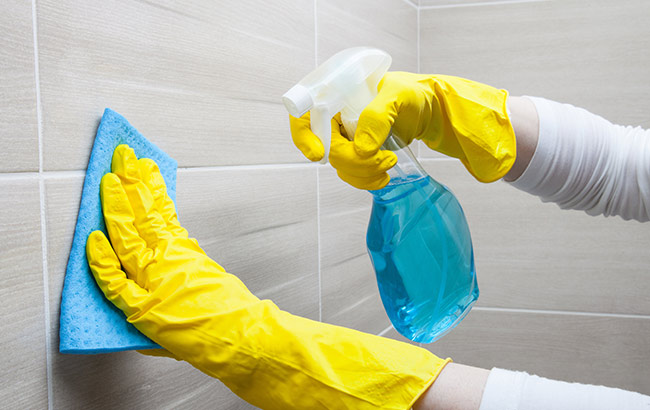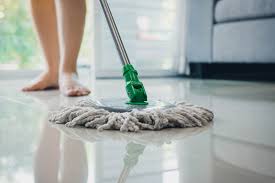Tiles are a popular flooring and wall covering option due to their durability, aesthetic appeal, and ease of maintenance. However, to keep them looking their best, regular cleaning is essential. The frequency of tile cleaning depends on various factors, including the type of tile, its location, foot traffic, and exposure to moisture or spills. Establishing a consistent cleaning routine will not only enhance the appearance of your tiles but also extend their lifespan.
Understanding Different Types of Tiles and Their Cleaning Needs
Tiles come in various materials, each with unique cleaning requirements. Ceramic and porcelain tiles are relatively easy to maintain due to their non-porous surfaces. Regular sweeping and mopping can keep them in excellent condition. Natural stone tiles, such as marble, travertine, and slate, require more delicate care as they are more susceptible to staining and scratching. Using pH-neutral cleaners is crucial to avoid damage. Check out the latest updates on tile cleaning here.

Grout, the material used to fill the gaps between tiles, also plays a significant role in overall tile maintenance. Over time, grout lines can accumulate dirt, mold, and mildew, making them appear discolored. Proper cleaning and sealing of grout can prevent long-term damage and maintain a fresh look.
Daily Maintenance for Tiles
Daily cleaning is essential in high-traffic areas such as kitchens, bathrooms, and entryways. Sweeping or vacuuming removes dust, dirt, and debris that can cause scratches. For tiled surfaces in kitchens, wiping up spills immediately is crucial to prevent stains and grime buildup. In bathrooms, daily wiping of shower tiles helps minimize soap scum and mold growth. Using a damp microfiber mop or cloth ensures that tiles remain free from dust and minor stains.
Weekly Cleaning Routine
A deeper cleaning session should be incorporated at least once a week to maintain the tiles’ shine and hygiene. Mopping with warm water and a mild tile cleaner helps remove any dirt that daily cleaning might miss. For stubborn stains, a gentle scrubbing with a soft brush or sponge can be effective. Bathrooms may require additional care due to constant moisture exposure. Using a mildew-resistant cleaner can help keep tiles and grout free from mold.
For kitchen tiles, grease and food residue can accumulate, making weekly cleaning essential. A mixture of warm water and a mild detergent works well to break down grease. Ensuring proper ventilation during and after cleaning prevents excessive moisture buildup, which can lead to mold growth.

Monthly Deep Cleaning
A thorough deep cleaning session should be scheduled once a month to maintain the longevity of the tiles and grout. This includes scrubbing grout lines with a specialized grout cleaner or a mixture of baking soda and water. A soft brush can be used to remove embedded dirt without damaging the grout.
Steam cleaning is another effective method for deep cleaning tiles, particularly in bathrooms and kitchens. The high temperature of steam can dissolve tough grime and eliminate bacteria without the need for harsh chemicals. Natural stone tiles may require resealing during deep cleaning to maintain their protective barrier against stains and moisture.
Seasonal and Annual Tile Maintenance
Every few months, it is beneficial to inspect tiles for any damage, cracks, or loose grout. Addressing minor issues promptly can prevent costly repairs in the future. Reapplying grout sealer every six months to a year helps maintain its resistance to moisture and stains.
For households with pets or children, additional seasonal deep cleaning may be necessary due to increased dirt and spill exposure. Professional tile and grout cleaning services can be considered annually to restore the tiles to their original condition, especially in high-traffic areas.
Outdoor tiles, such as those on patios or driveways, require seasonal maintenance. Exposure to the elements can lead to moss and algae growth, making surfaces slippery. Power washing or using a specialized outdoor tile cleaner helps keep these areas safe and visually appealing.
Factors That Affect Tile Cleaning Frequency
The cleaning schedule for tiles can vary based on several factors. Households with pets or young children may require more frequent cleaning due to increased spills and dirt accumulation. Homes in areas with high humidity may experience faster mold and mildew growth, necessitating more regular maintenance.
The color and finish of tiles also influence cleaning needs. Light-colored tiles may show dirt more easily, requiring more frequent mopping, while glossy tiles can highlight smudges and water spots. Matte-finish tiles may conceal dirt better but can still accumulate grime over time.
Commercial spaces and public areas experience higher foot traffic, making daily cleaning essential to maintain a professional appearance. Hotels, restaurants, and office buildings often have dedicated cleaning schedules to ensure hygiene and aesthetics.
Facebook page: https://www.facebook.com/eaglecarpetpros